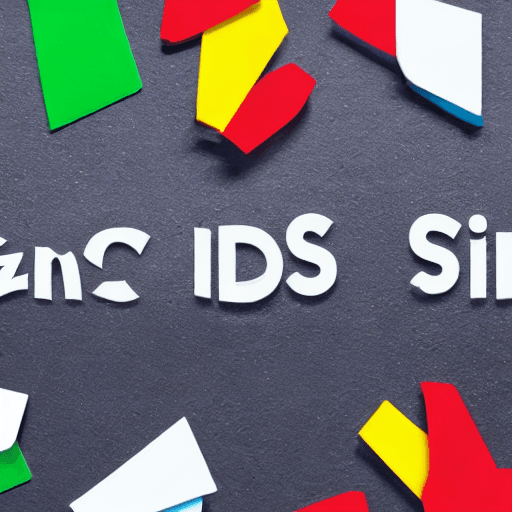

Google Ads remains one of the most powerful advertising platforms available. However, simply throwing money at your campaigns isn’t a recipe for success. Effective Google Ads management hinges significantly on how you allocate and optimize your budget. This guide delves into the intricacies of Google Ads campaign budget optimization, providing you with a robust framework to maximize your return on investment (ROI). We’ll explore various strategies, from initial setup to ongoing monitoring and adjustments, ensuring you’re getting the most out of every dollar spent.
Before launching any Google Ads campaign, it’s crucial to define your objectives. Are you aiming for brand awareness, lead generation, direct sales, or something else? Your budget should directly reflect these goals. A campaign focused on driving immediate sales will typically require a higher budget than one designed to build brand recognition. Let’s consider a hypothetical example: a small e-commerce business selling handcrafted jewelry. Their primary goal might be to drive online sales, justifying a larger budget compared to a local service provider aiming for brand awareness.
Key Questions to Ask:
Answering these questions will provide a solid foundation for setting realistic budget targets. Don’t just pick a number; understand what you’re trying to achieve with that amount.
Several budgeting strategies can be employed within Google Ads. The best approach depends on your business, industry, and campaign goals.
This is the most common approach. You set a daily budget limit, and Google Ads automatically adjusts your spending throughout the day to stay within that limit. This provides granular control and prevents overspending during peak periods. It’s particularly useful for businesses with fluctuating demand or those operating in industries with seasonal trends. For instance, a retailer selling winter clothing would likely increase their daily budget during the colder months.
With lifetime budgeting, you set a total budget for the entire campaign duration. Google Ads then automatically distributes this budget across your keywords and targeting options to achieve your campaign goals. This strategy is often favored for brand awareness campaigns where the focus is on long-term reach rather than immediate conversions. It’s less common for campaigns with a strong focus on direct sales.
You can set budgets at the campaign level or the ad group level. Ad group budgeting provides more granular control, allowing you to allocate more budget to keywords and targeting options that are performing well. This is particularly beneficial when you have a diverse range of keywords with varying levels of competition and potential ROI. For example, a travel agency might have a campaign targeting “flights to London” and another targeting “hotels in London.” They’d likely use ad group-level budgeting to allocate more budget to the more profitable “flights to London” ad group.
Your bidding strategy significantly impacts how your budget is spent. Google Ads offers several bidding options, each with its own advantages and disadvantages.
With manual bidding, you set bids for each keyword individually. This gives you complete control over your bids, but it requires significant time and expertise to manage effectively. You’ll need to constantly monitor your keywords, adjust bids based on performance, and stay ahead of competitor activity. This is best suited for experienced PPC managers.
Google Ads offers several automated bidding strategies that can optimize your bids based on your campaign goals. These strategies are often more efficient than manual bidding, especially for beginners.
Important Note: Automated bidding strategies require sufficient conversion data to function effectively. Start with manual bidding and gradually transition to automated strategies as you gather more data.
Effective targeting ensures your ads are shown to the most relevant audience, maximizing your ROI. Google Ads offers a wide range of targeting options, including:
Example: A sporting goods retailer targeting “running shoes” would primarily focus on keyword targeting and demographic targeting (e.g., men and women aged 25-45 interested in fitness). They might also use remarketing to target users who have visited their website’s running shoe section.
Campaign optimization is an ongoing process. Regularly monitor your campaign performance and make adjustments as needed. Here’s what to look for:
Regularly Review: Analyze your data at least weekly, and consider daily adjustments based on real-time performance. Don’t be afraid to pause underperforming keywords and allocate budget to those that are delivering the best results. A/B test different ad copy and landing pages to identify what resonates most with your audience.
Optimizing your Google Ads campaign budget is a critical component of successful PPC advertising. By understanding your goals, selecting the right bidding strategy, targeting the right audience, and continuously monitoring and optimizing your campaigns, you can maximize your ROI and achieve your marketing objectives. Remember that PPC is an iterative process – experimentation and data analysis are key to long-term success.
This guide provides a foundational understanding of Google Ads campaign budgeting. For more advanced strategies and techniques, consider exploring online courses and resources.
Tags: Google Ads, campaign budget optimization, PPC advertising, ROI, bidding strategies, targeting, Google Ads tips, advertising spend, PPC management
[…] YouTube Ads, Google Ads, Ad Policies, Compliance, Google Ad Management Agency, YouTube Advertising, Ad Policy Compliance, […]
[…] Google Ads offers a staggering array of targeting options, far beyond just broad keyword targeting. While broad targeting can reach a large audience, it often leads to wasted spend and low conversion rates. Audience segmentation allows you to narrow your focus, delivering your message to individuals who are most likely to be interested in your product or service. Think of it like this: instead of shouting into a crowded room, you’re having a focused conversation with a small group of engaged listeners. This targeted approach dramatically improves campaign efficiency and ultimately, your bottom line. […]
[…] target the right audience with the right message. This comprehensive guide explores the key Google Ads targeting strategies you need to master in 2023, moving beyond basic demographic targeting to […]
[…] and competition intensifies. Without a proactive approach, campaigns can quickly fall behind. A Google Ads account audit acts as a diagnostic tool, revealing weaknesses and highlighting areas for […]